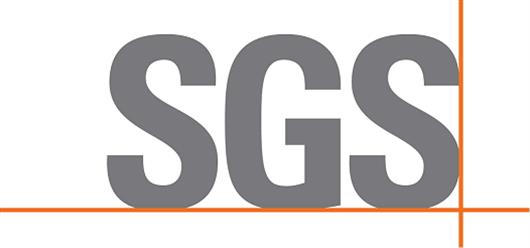 Add My Company
Add My Company
Sign In

SGS United Kingdom Ltd has researched and written a white paper to provide businesses with an insight of the contents and key changes to the current draft revision of ISO/DIS 9001 issued in May 2014 – the most internationally recognised standard for quality management systems (QMS).
With more than 1.1 million certificates issued in more than 185 different countries last year, ISO 9001 certificates represent almost 72% of the total number of certificates issued globally. ISO 9001 helps organisations to continually achieve, benchmark and monitor high quality performance across all operations. It provides a framework to ensure applicable statutory and regulatory requirements are consistently met, whilst enhancing customer satisfaction.
SGS’ white paper is not intended to be a full explanation of all the requirements of ISO/DIS 9001, nor is it the final revision of the standard; rather it provides an overview of the key changes to QMS and gives organisations an indication of what to expect to allow them to prepare for compliance after its final publication in September 2015.
The latest Draft International Standard of ISO 9001, issued in May 2014, has four key modifications to ISO 9001:2008. These include the structure and adoption of Annex SL framework, the internal and external context of QMS, a focus on risk management and changes to QMS requirements. The white paper provides a description and breakdown of each of the clauses in order to help organisations understand the new methodology.
ISO/DIS 9001 incorporates the clause structure of Annex SL (clause 3) – a framework that was introduced to provide a common approach and structure for all new and existing ISO standards to follow. This will ensure that the final version of ISO 9001 is compatible with other management system standards such as ISO 14001.
ISO/DIS 9001 now requires all organisations establishing a QMS to identify the relevant internal and external factors that can affect its QMS or inhibit the fulfilment of its purpose (clause 4.1). Organisations must also determine the ‘interested parties’ (or ‘stakeholders’) relevant to its QMS along with their requirements and expectations (clause 4.2). The change in procedure will require organisations to move away from a purely inward-focusing approach to QMS development and implementation, to one where external factors have a greater influence on the way in which the QMS is focused and prioritised.
The white paper also discusses the adoption of a new requirement for organisations to use relevant contextual information to identify the risks and opportunities that may affect its QMS (clause 6.1). Organisations then have to plan actions to address these risks and opportunities, integrate and implement them into its QMS processes and evaluate the effectiveness of these actions.
The final key change that SGS’ white paper aims to highlight relates to changes in QMS requirements and processes. Organisations are no longer required to appoint a ‘Management Representative,’ instead there is an emphasis on ‘leadership’ in attempt to ensure that ownership of an organisation’s QMS is not simply focused on the individual (clause 5). Additionally, ‘Preventative Action’ is no longer a specific clause, as it is now a primary objective relating to risks and opportunities. ISO/DIS 9001 has also introduced a requirement relating to operational control and development of the organisation’s QMS (clause 8). Organisations are required to establish a ‘criteria for processes’ and implement controls in accordance with these criteria. The intention is to ensure that organisations systematically define and manage not just their processes, but also the interaction between them.
SGS’ white paper can help organisations better understand the contents and potential implications of the changes to QMS requirements in ISO/DIS 9001. As the world’s leading certification body and a professional learning and development organisation, SGS offers a variety of solutions during the transition process including risk-based thinking, leadership training courses, gap analysis and Annex SL courses. To download the white paper please click www.sgs.com/iso9001whitepaper.
For more information on SGS gives businesses a heads up on changes to the quality management system standard talk to SGS United Kingdom Ltd
Enquire Now
More News
List your company on FindTheNeedle.
